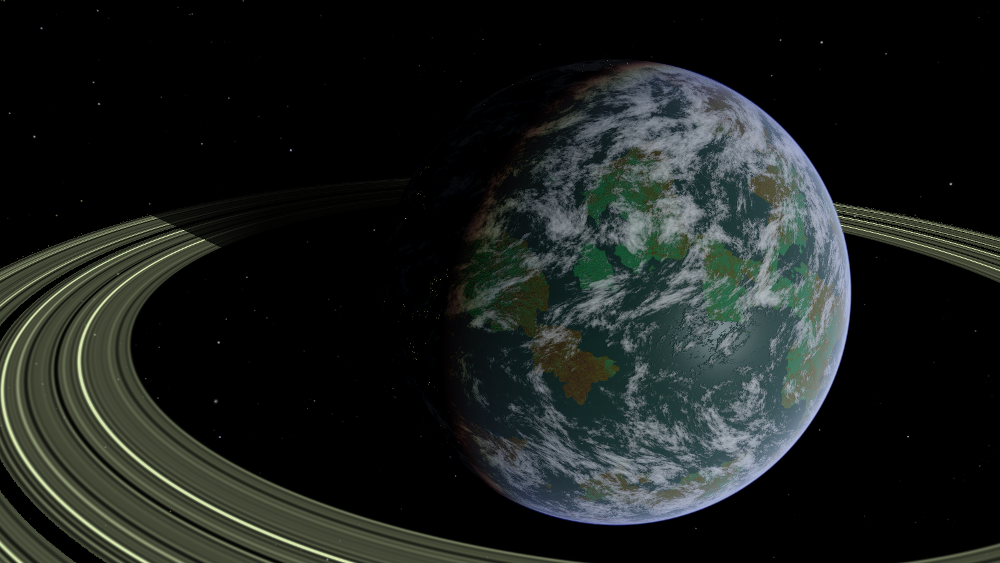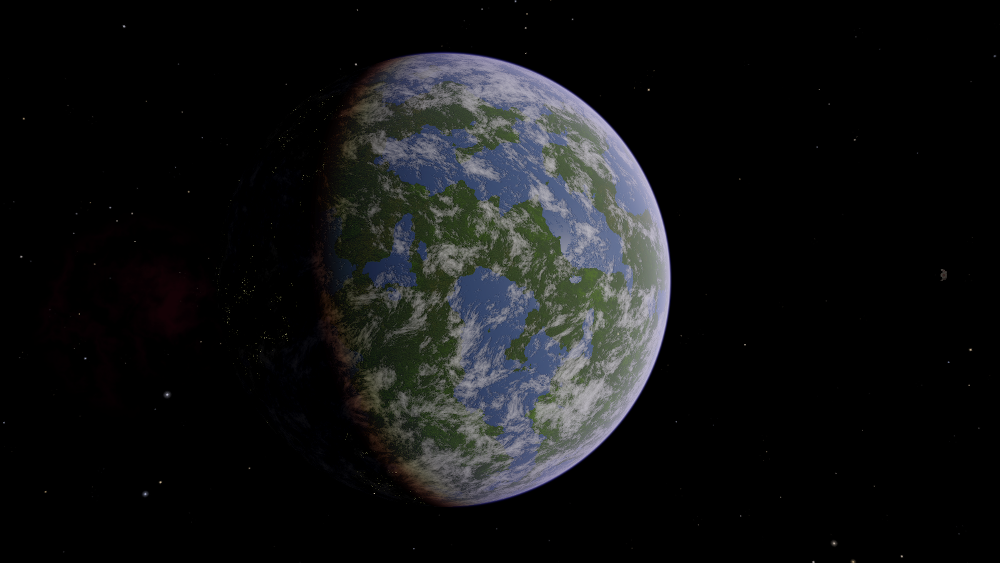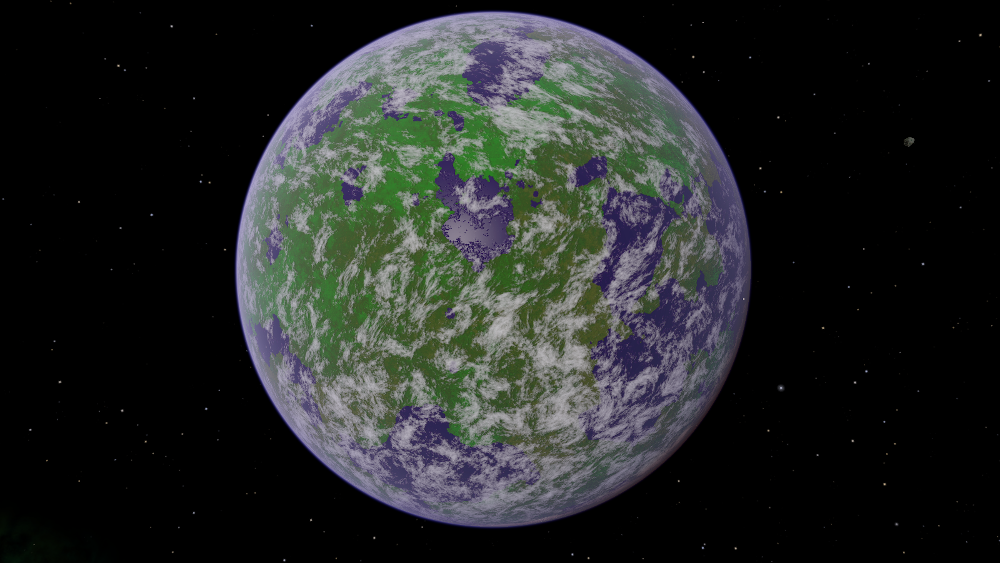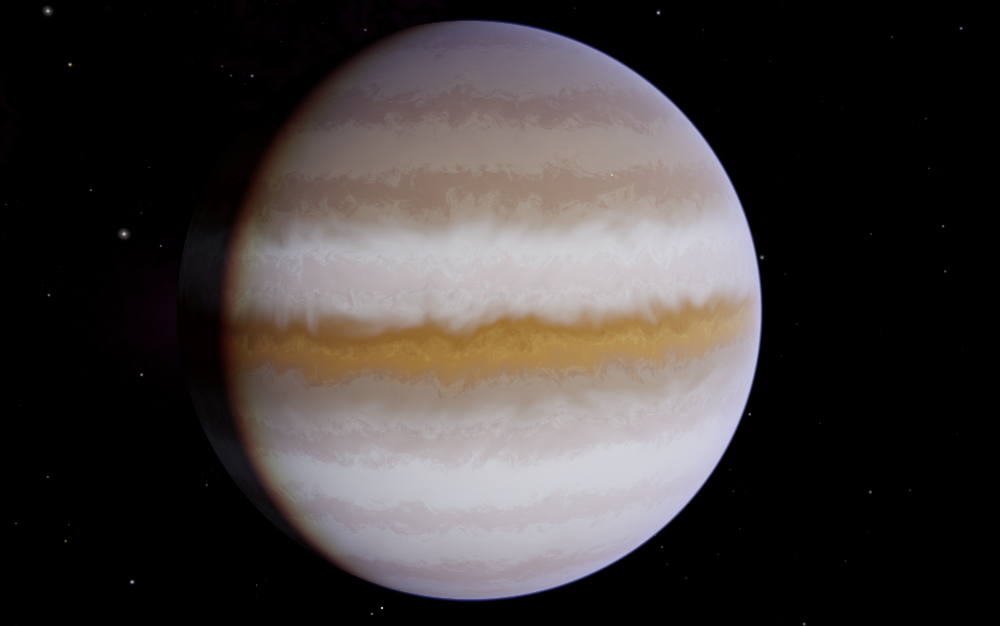BPlanets
Posted: Sat Jun 13, 2020 5:08 pm
BPlanets is an oxp attempt to bring in planet maps that make use of new features of composite maps available in Oolite 1.89 (development).
Here are some details.
0. Name -- I named it BPlanets for two main reasons: first, the maps are generated with Blender, and second, Povray Planets are the "A" package as they are a source of inspiration for this, and the target for final coverage.
1. For the adventurous and courageous I can provide the Blender file used to generate these (it might need some sanitizing, as it's in a "personal ordered mess" status at this time ).
).
2. The initial package has only Earth like variants. As mentioned above, I used Povray Planets as a source of inspiration, and tried to cover this initial type of planet. As a reference, I classified the G1 Povray Planets in 5 main types: Terran (119), Barren (115), Water (7), Winter (5), and Gas Giants (10).
This package has 4 different types of colour palettes for the planets.
3. Technical aspects:
- all the maps are cube maps 1024x6144 (yup, they are 6k, alright)
- the procedural maps are generated in Blender (2.8x - 2.83 at this time)
- the actual generation is done by "baking" - which is a sort of rendering, not "on" a camera view, but on a texture
- there are 4 baking steps, one for diffuse, one for specular, one for normal map, and one for city lights
- the actual process is scripted in Python (Blender's scripting engine), because the parameters are "changed by animation", and although you can render an animation, there is no such option for baking
- the main inconvenience is that baking is only available for the Cycles engine (which can be used through GPU and/or CPU). The times it took for each of the steps was roughly 6 minutes per diffuse map, 6 minutes per normal map, 2 seconds per specular map, and 2 minutes per lights map (for the curious this happened on an NVidia GeForce RTX 2070 SUPER -- the newer OptiX facility doesn't do any good, as it doesn't support baking).
- the post-processing (for combining diffuse/city lights and normal/specular) was done using ImageMagick suite. The city lights and specular maps need to be inverted before inserted in the alpha channel of the diffuse and respectively normal map.
Suggestions, complaints, or any other comments are welcome.
Here are some details.
0. Name -- I named it BPlanets for two main reasons: first, the maps are generated with Blender, and second, Povray Planets are the "A" package as they are a source of inspiration for this, and the target for final coverage.
1. For the adventurous and courageous I can provide the Blender file used to generate these (it might need some sanitizing, as it's in a "personal ordered mess" status at this time
2. The initial package has only Earth like variants. As mentioned above, I used Povray Planets as a source of inspiration, and tried to cover this initial type of planet. As a reference, I classified the G1 Povray Planets in 5 main types: Terran (119), Barren (115), Water (7), Winter (5), and Gas Giants (10).
This package has 4 different types of colour palettes for the planets.
3. Technical aspects:
- all the maps are cube maps 1024x6144 (yup, they are 6k, alright)
- the procedural maps are generated in Blender (2.8x - 2.83 at this time)
- the actual generation is done by "baking" - which is a sort of rendering, not "on" a camera view, but on a texture
- there are 4 baking steps, one for diffuse, one for specular, one for normal map, and one for city lights
- the actual process is scripted in Python (Blender's scripting engine), because the parameters are "changed by animation", and although you can render an animation, there is no such option for baking
- the main inconvenience is that baking is only available for the Cycles engine (which can be used through GPU and/or CPU). The times it took for each of the steps was roughly 6 minutes per diffuse map, 6 minutes per normal map, 2 seconds per specular map, and 2 minutes per lights map (for the curious this happened on an NVidia GeForce RTX 2070 SUPER -- the newer OptiX facility doesn't do any good, as it doesn't support baking).
- the post-processing (for combining diffuse/city lights and normal/specular) was done using ImageMagick suite. The city lights and specular maps need to be inverted before inserted in the alpha channel of the diffuse and respectively normal map.
Suggestions, complaints, or any other comments are welcome.





